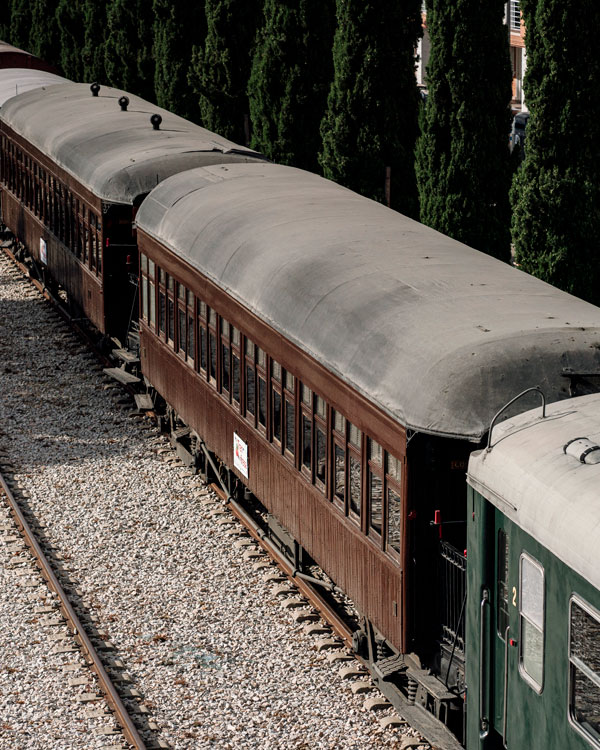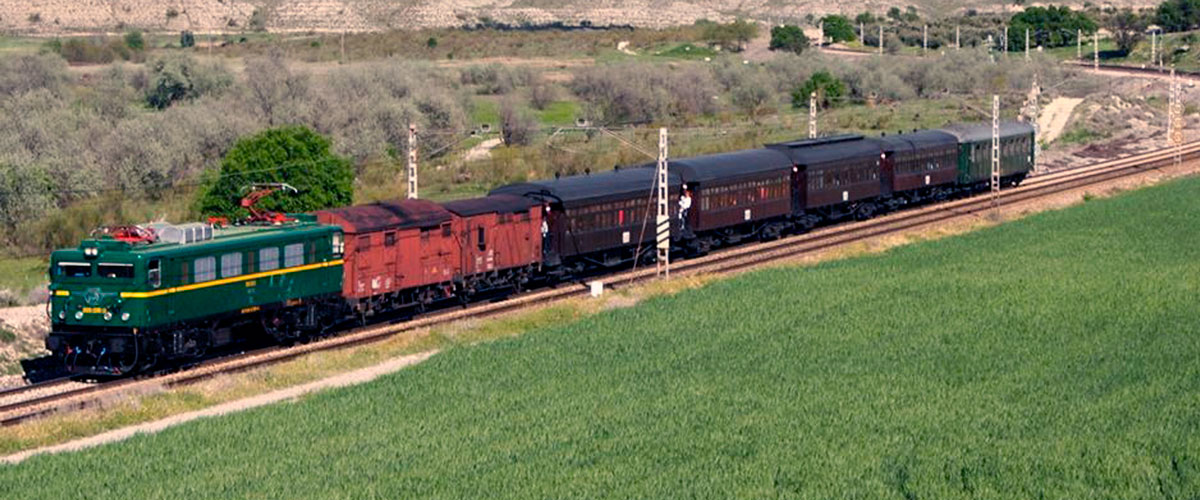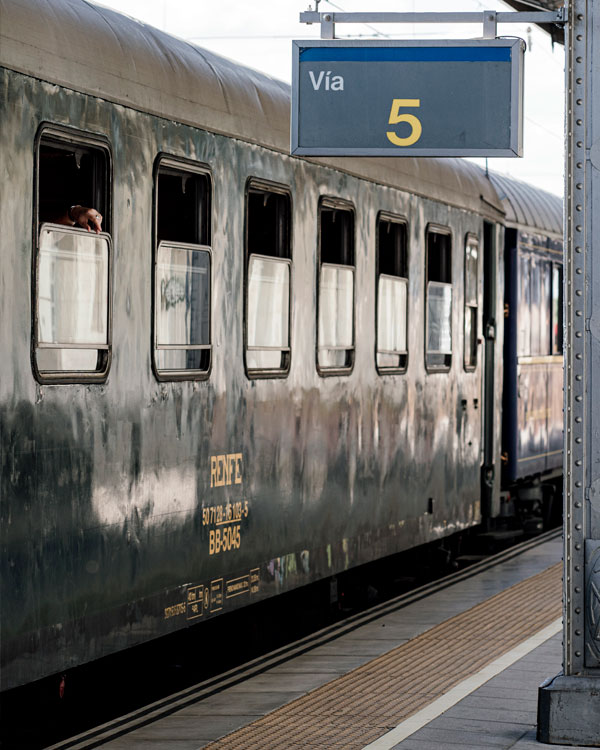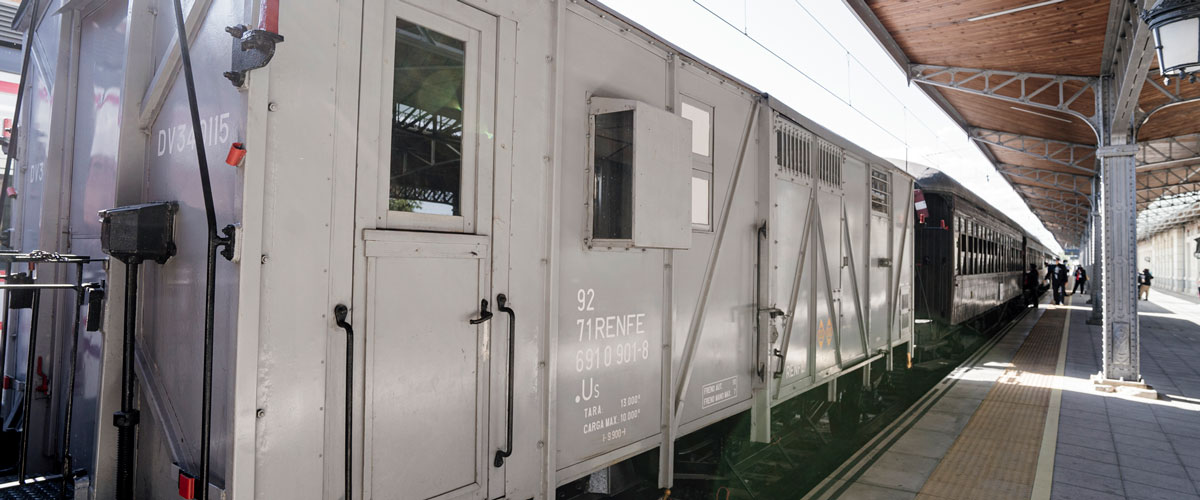
Composition of the train
In 2025, the Strawberry Train was made up of a boxcar and a wagon from the 1960s, four wooden coaches from the 1920s called 'Costa', and a metal coach with a side aisle from the 1940s.
The “Costa” carriages
The “Costa” carriages that make up the Strawberry Train were part of a series of coaches built for the commuter services of the MZA Company (Madrid-Zaragoza-Alicante) between 1914 and 1930. They are wooden coaches since MZA never used metal coaches as they were considered too hot for their southern lines. They are equipped with open platforms with balconies at the ends. Originally it had a steam heating system and gas lighting, which was later replaced by electric lighting.
They are so named because among their most common services were
the commuter services of the Catalan coast: Barcelona to Mataró,
Sitges... They were used as commuter material or internal
service trains until the end of the 1960s. In the last century,
four of these coaches were saved for use in filming Western
movies, and thanks to this cinematographic use they were
incorporated into this train.
Of these, the CC-2435 was built in 1923 by the Company of
Material for Railways and Construction for the MZA Company. It
has 92 seats on wooden slat seats, distributed in a single space
with a central aisle. For its part, the CC-2375 was manufactured
in 1920 by the New York’s American Coach and Foundry Export
Company, for MZA. Very similar to the previous one, we should
note the bulging roof of this vehicle, characteristic of North
American-made coaches. It was attached to the Military Railway
Service, where it served as a training coach (VE-6M) and where,
from 1985, it was restored to form part of the usual composition
of the Strawberry Train of the Madrid Railway Museum.

2nd Class Coach BB-5045

This coach was part of the 5000 Series made up of 345
coaches, one of the first series of metal coaches commissioned
by RENFE. Built as a 2nd class coach in the order of 66 coaches
(BB 5001 to 5066) between 1947 and 1953, a request that would be
completed with another 25 coaches between 1962 and 1963. With
these coaches, RENFE massively introduced the use of 2nd class
coaches, since the old railway companies practically did not use
them.
The manufacture of the first delivery of these coaches was
carried out by Astilleros de Cádiz, Devis and Macosa (Barcelona
and Valencia). It maintains the novel aspect of its time, with
more advanced access doors towards the end of the coach, and
more spacious platforms. Painted in olive green with yellow
stripes below the windows and yellow "threads" that framed the
sides.
It has a side corridor with access to eight departments, with
eight seats each, a total of 64 seats, which originally had
fabric upholstery, but were reupholstered in the 1960s with
green plaster. This coach was modernized in the 1980s for a
failed export of material to Cuba, of which there is an
improvement in comfort in its seats.
Vans
Along with these coaches, our train has two service vans. On the one hand, a freight wagon from the 1960s, from the J-400,000 series. They are airy closed wagons, inside which all manner of things have been transported in its long railway history. Agricultural products, fish, fodder, wood, fertilizers, machinery, livestock... It is a type of wagon that defines the transport of railway goods and that in our train plays the role of a service, energy and workshop van.
Next to it was a truck from the Train Chief DV series. It accompanied freight and passenger trains. In addition to being able to carry parcels, it had a small office for the Train Chief and two cages for transporting pets. As its hallmark, it has two "lookouts": windows that protrude from the box of the van so that the train chief can watch the train while being sheltered from inclement weather.

